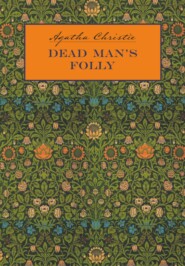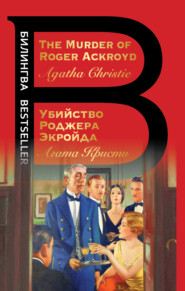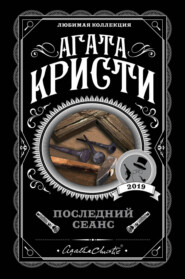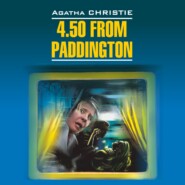По всем вопросам обращайтесь на: info@litportal.ru
(©) 2003-2024.
✖
The Complete Tommy and Tuppence 5-Book Collection
Автор
Год написания книги
2018
Настройки чтения
Размер шрифта
Высота строк
Поля
The plot of The Secret Adversary has its origins some four years earlier during an actual historical fact, the sinking of the Lusitania in May 1915. The ship had left New York the previous week with almost two thousand passengers (160 of them U.S. citizens) and was hit by a German torpedo off the coast of Ireland. Twelve hundred passengers drowned, among them 120 Americans. Despite German claims that it was carrying arms, the world was outraged by the sinking of a passenger ship and this angry indignation hastened the entry of the United States into the war. (Ironically, recent maritime investigations have disclosed the presence of ammunition on board.) At the time of the publication of The Secret Adversary this infamous tragedy, would have been still fresh in the public consciousness and the short opening scene on board the ill-fated ship seizes the reader’s attention. This seemingly insignificant event sets in motion a series of events into which our hero and heroine are drawn before they realize what is happening.
The main story, set some years later, begins with the chance meeting of Miss Prudence Cowley and Mr. Thomas Beresford outside the long-gone Dover Street tube station. In renewing their earlier acquaintance we learn that they have both been recently de-mobbed from the armed services and are at loose ends. They retire to a Lyons Corner House teashop (a famous chain also long gone) and update each other on their life histories. We learn that they knew each other in childhood and had become reacquainted during the war when Tommy was injured and had been a patient in the same hospital where Tuppence worked.
Tuppence is Miss Prudence Cowley, the daughter of Archdeacon Cowley (who makes a brief appearance at the close of The Secret Adversary) and the fifth of seven children. The origin of her nickname, Tuppence, is unclear, even to herself. She left home in Suffolk – not exactly reluctantly – to help the war effort and worked in various lowly positions in a hospital. Before her demobilization she also worked as a driver and in an office. Tommy’s life story is even briefer. Apart from having a rich uncle who was, at one stage, anxious to adopt him, little is known of his parents, who are both dead. He rose to the rank of lieutenant in the army and was wounded several times. Both of them are unemployed and almost penniless. This also is historical fact when the return of thousands of service personnel from World War 1 caused mass unemployment and became a major social and economic problem.
Apart from the smooth storytelling the other attractive feature of the book is the banter of the two main protagonists. The opening exchange sets the tone and this continues throughout most of the book, even in the tight corners in which they find themselves. Tuppence’s insouciant conversation with Mr. Whittington – “You heard me say yesterday that I proposed to live by my wits. It seems to me that I have now proved that I have some wits to live by!” – is matched by Tommy’s devil-may-care attitude – “‘Let’s hope the judge hasn’t put his black cap on,’ said Tommy frivolously” – during his later incarceration. Later, Tuppence’s capture of the mind and heart of Albert – “‘American Detective Force,’ she hissed. Albert fell for it. ‘Lord!’ he murmured ecstatically” – is a masterpiece of psychology and acting.
The elements that comprise The Secret Adversary are very much of the period – a fearless detective (or, in this case, two fearless detectives) battling a mysterious mastermind bent on world domination, dastardly kidnappings and daring rescues, false telegrams and forged notes, disguise and impersonation. Also thrown into the mix are a millionaire, a strange nursing home, a couple of automatically suspicious foreigners (i.e. anyone from outside Britain), and an unexplained death. From these somewhat clichéd ingredients Christie constructs a highly readable story complete with original and unexpected developments and a surprise Christie-esque revelation in the final chapter. The mysterious Mr. Brown plays the same part throughout this thriller as the unidentified murderer does in her whodunits – Mr./Mrs./Miss X waiting to be unmasked in the final chapter. She also conceals the identity of this dangerous mastermind as artfully as she did of her first killer in The Mysterious Affair at Styles.
Some elements of the book’s plot surface in later Christie stories: Tommy’s infiltration of the meeting in the house in Soho foreshadows a similar scene, seven years later, in The Seven Dials Mystery; the sinister nursing home reappears in the later Tommy and Tuppence story “The Case of the Missing Lady,” as well as the much later Why Didn’t They Ask Evans?; vitally important papers are also a feature in the play Black Coffee and the short story “The Incredible Theft.” Also, the overall point of characters pretending to be other than they are will be a constant feature of Christie’s fiction for the next fifty years. The other surprise for even well-informed Christie readers is the casual mention in Chapter Five of one Inspector Japp, normally the partner-in-crime of Hercule Poirot. He had already appeared in The Mysterious Affair at Styles and would continue to be a grudging admirer of the little Belgian for many years, and cases, to come.
Published in January 1922 in the United Kingdom and some months later in the United States, The Secret Adversary received promising press. The London Times found it “refreshingly original, the identity of the arch-criminal is cleverly concealed to the very end” while the Daily News thought it “an ingenious and exciting yarn … eminently readable.” The Saturday Review considered it “an exciting story of adventure, full of hair-breadth escapes, and many disappointments if [readers] try to guess the riddle before the author is ready to give them the clue. An excellent story.” The Daily Chronicle summed it up in a manner that prophetically foreshadowed many reviews to come: “It’s an excellent yarn and the reader will find it as impossible as we did to put it aside until the mystery had been faithfully fathomed.”
These verdicts were encouraging because The Secret Adversary was a complete change of style and pace from Christie’s first book. This first decade of her writing career found Christie searching for a formula that suited her talents. Although the whodunit was the type of book with which she was to find fame and fortune she wrote only four of them between 1920 and 1929: The Mysterious Affair at Styles, The Murder on the Links, The Murder of Roger Ack-royd, and The Mystery of the Blue Train. She interspersed each of these with thrillers, which emphasized physical rather then cerebral activity – The Secret Adversary, The Man in the Brown Suit, The Big Four, and The Seven Dials Mystery – and short-story collections – Poirot Investigates, Partners in Crime, and the episodic novel The Big Four, culled from earlier short stories.
The short-story market at the time was enormous and lucrative, with a mass of fiction magazines crowding the bookstalls. The regular appearance of a short story or a series of short stories kept an author’s name in the public consciousness and, more important for the writer, represented a source of immediate income. Many crime writers appeared regularly in the pages of the multitude of magazines available – Conan Doyle and Sherlock Holmes, Chesterton and Father Brown, Bailey and Mr. Fortune, Hornung and Raffles – and in many cases the appearance of a new story by a favorite writer was a selling point, with the name and title emblazoned on the cover. During this decade Christie wrote an enormous number of short stories for this market; most of them would subsequently appear in collections published over the next twenty years. So, the adventures of Tommy and Tuppence continued almost immediately after their first book appearance in short-story format.
The second Tommy and Tuppence book, Partners in Crime, was published in 1929. Now happily married, the Beresfords at the request of Mr. Carter from The Secret Adversary set up a detective agency and call themselves, with customary modesty, Blunt’s Brilliant Detectives. In fact, the agency is a cover for the dissemination of vital covert information as the previous owner, Mr. Theodore Blunt, was a spy. By taking over his business Tommy and Tuppence are to keep their eyes and ears open and keep Mr. Carter informed. Although this subplot surfaces from time to time in the course of the individual cases that make up the book, it is never a major, or indeed a convincing, reason for their adventures. Most of the cases undertaken by the pair are clever and entertaining but as an added bonus they tackle each case in the manner of a (then) well-known detective.
Although the collection was published in the United Kingdom in September 1929 the individual stories had appeared up to six years previously, mainly in The Sketch, the same magazine in which one Hercule Poirot first made his short-story appearance. With the exception of “The Unbreakable Alibi,” which appeared in 1928, all of the other stories appeared in 1923–24; in other words, in the year following the appearance of The Secret Adversary. Collecting them necessitated some rewriting and rearrangement before the book was issued. So for example when, in Chapter One, Tuppence says “Tommy and Tuppence were married … And six years later they were still living together,” this timeframe tallies with the publication of the book and not with the appearance of the original short story.
A major feature of Partners in Crime is the parody/pastiche element. This idea is promoted by Tommy who, in an effort to emulate the great detectives of fiction, invests in a collection of detective stories and decides to solve each case in the manner of one of his heroes. Thus “The Affair of the Pink Pearl” is solved in the manner of R. Austin Freeman’s Dr. Thorndyke, a pioneer in the field of scientific investigation. “The Case of the Missing Lady” is a Sherlock Homes case and indeed more than one case for the sleuth of Baker Street involved a search for a missing person. Although it is much lighter in tone it is difficult, when reading “The Case of the Missing Lady,” not to think of Holmes’ very similarly titled investigation of “The Disappearance of Lady Frances Carfax.” Some of the characters pastiched are forgotten by modern audiences but most crime fans will fondly remember Edgar Wallace who is recalled in “The Crackler”; Father Brown in “The Man in the Mist” (one of the most accurate pastiches in the book); and Roger Sheringham, the creation of Anthony Berkeley, in “The Clergyman’s Daughter.” The persistent Inspector French, breaker of alibis, and the creation of Irishman Freeman Wills Crofts, is recalled in “The Unbreakable Alibi”; and Baroness Orczy’s Old Man in the Corner, whose modus operandi was to study the account of a crime and to solve it without leaving his ABC teashop, is cleverly captured in “The Sunningdale Mystery.” And in a clever piece of gentle self-mockery the last story of the collection features detection in the style of the great Hercule Poirot in “The Man Who Was No. 16,” a sly reference to The Big Four!
N or M? was published in 1941 and was a complete change of pace for both Christie and Tommy and Tuppence. It is set unequivocally in World War II and was written during the early days of the war. Christie alternated the writing of this with the writing of the very traditional whodunit The Body in the Library and explains in her autobiography, “I had decided to write two books at once since one of the difficulties of writing a book is that it suddenly goes stale on you.” It appears that the composition of two totally contrasting books helped to keep each of them fresh.
The Beresfords are at something of a loose end because both their children are involved in war work and communication between them is guarded. When Tommy (and Tommy only) is asked to undertake a mission at the request of a Mr. Grant, actually an ally of their old friend Mr. Carter, he agrees. A very unimpressed Tuppence takes matters into her own hands and when Tommy arrives at his supposedly secret destination it is to find her already installed, complete with a new persona. The setting, a seaside boardinghouse, is very traditional Christie territory and despite the strong presence of spies, secret agents, codes, and covert subversives the question to be answered is not so much Whodunit? but “Who Is the Spy Mastermind,” although with customary Christie ingenuity she manages to include a murder mystery at the same time, and offers clever and unexpected answers to each problem.
After a gap of more than twenty-five years By the Pricking of My Thumbs was the next-to-last adventure for the pair. When we meet Tommy and Tuppence in the book’s opening chapter they are a middle-aged couple chatting over breakfast. Perhaps because Christie herself was now in her late seventies, most of the characters in the book are similarly elderly. A letter from Tommy’s aunt spurs them on to visit her in her retirement home and there Tuppence meets the elderly Mrs. Lancaster with whom she has a peculiar and, in retrospect, sinister conversation concerning the deaths of some other residents. When on a subsequent visit they discover that Mrs. Lancaster is no longer a resident, having been removed by mysterious relatives, their suspicions are aroused and Tuppence decides to investigate.
The conversation with Mrs. Lancaster also contains an extraordinary sequence, one that is repeated almost exactly in two other unconnected Christie titles. In Chapter Two of By the Pricking of My Thumbs, Chapter Ten of Sleeping Murder (1976), and Chapter Four of The Pale Horse (1961) we read of an elderly lady with white hair drinking a glass of milk and holding a conversation about a dead child behind the fireplace. The phrase “Is/Was it your poor child” appears in all three examples although it is only in By the Pricking of My Thumbs that the incident has any relevance to the plot; in fact, “Was It Your Poor Child?” is the name of the chapter. In both other cases the scene takes place in a psychiatric institution rather than a retirement home. To make the conversation even more bizarre each case also mentions a particular time of day (different in each case). The puzzle of why this scene should appear in no less than three disconnected Christie titles (a Marple, a Tommy and Tuppence, and a stand-alone) has never been explained. It can only be assumed that this conversation, or something very like it, actually happened, or was told, to Agatha Christie and made such an impression on her that she subsumed into her fiction.
Like many of the books of her later years the plot, and much of the dialogue, of By the Pricking of My Thumbs is repetitious, and despite strong opening and closing scenes the suspicion remains that ruthless editing would have helped. But as the dedication, to “the many readers in this and other countries who ask about Tommy and Tuppence,” reminds us it is good to meet the Beresfords a gap of a quarter-century, but still with “spirit unquenched.”
Postern of Fate was not only the last Tommy and Tuppence book but also the last book that Agatha Christie wrote. By now she was eighty-three years old and in poor health, and it is arguable that her publishers should not have asked for another book. But writing her “Christie for Christmas” was what she had done for more than fifty years and eighty books, so it was inevitable that she would begin writing a new book as soon as the previous one had appeared in the stores. In fact, her Notebooks contain detailed notes for the book that was planned to follow Postern of Fate but, sadly, it was not to be.
Postern of Fate, like many of the latter-day Christies, begins promisingly: Tommy and Tuppence move into a new house where Tuppence, while shelving books, uncovers a coded message hidden in Robert Louis Stevenson’s Treasure Island, a message that suggests a murder had been committed there many years ago. “Mary Jordan did not die naturally … it was one of us.” Such a setup is typical Christie country but this intriguing opening is the most interesting aspect of the book and, despite a subsequent murder and the attempted murder of Tuppence, the bulk of the book is a series of nostalgic conversations. It is, in reality, a journey into the past both for the writer and the reader. Many elements from Christie’s happy childhood in her family home, Ashfield, appear in barely disguised form – the books she read, her rocking horse, the monkey-puzzle tree in the garden, the greenhouse – but the arch-plotter of yesteryear is little in evidence. We finally get to meet the Beresford grandchildren but the chronology of the three generations will not stand close scrutiny. A rapid decline in Agatha Christie’s health meant that in the years that followed Postern of Fate books and stories written many years earlier during her glory days – Poirot’s Early Case (1974), Curtain: Poirot’s Last Case (1975), and Sleeping Murder (1976) – would appear to delight her worldwide audience.
Although the name of Agatha Christie is inextricably linked to the whodunit, The Secret Adversary, in many ways an atypical story, was the first of her books to be adapted for the screen. In 1928 a German silent film of the book was released as Die Abentueur GmbH. It is highly unlikely that Agatha Christie ever saw this film herself (or, in fact, even knew of it) as prints of it have surfaced only in the last twenty years. Despite the fact that the film is German it starred an English actress and an Italian actor, Eve Grey and Carlo Aldini, as the intrepid investigators and is, despite its obvious restrictions, better than you might suppose. For the most part it follows the plot of the novel although as the film progresses the relationship between the two becomes less certain. But as an early example of the international interest in Christie’s work it remains a fascinating piece of cinema history.
After this screen outing the Tommy and Tuppence series languished for many years until British TV adapted the short-story collection Partners in Crime in 1983 and preceded the series with a two-hour version of The Secret Adversary. This lavish and faithful adaptation stars the perfectly cast James Warwick and Francesca Annis in the lead roles and also features George Baker in the role of Mr. Whittington. This actor was later to achieve fame as Ruth Rendell’s inspector Wexford but had earlier appeared as Ngaio Marsh’s Inspector Alleyn; he also appeared in the Joan Hickson version of At Bertram’s Hotel (1987) and was the first Neville Strange in the original West End production of Towards Zero in 1956. The television movie also stars Honor Blackman as a glamorous and sinister Rita Vandemeyer and Alec McCowan as a sleek Peel Edgerton. The ten-part television series that followed, called Agatha Christie’s Partners in Crime, faithfully adapted most of the stories from the collection, although omitting, for the most part, the references to the pastiche element. The only stories not to appear were “The Adventure of the Sinister Stranger,” “Blindman’s Buff,” and “The Man Who Was No. 16.” The series was broadcast on. British TV between October 1983 and January 1984.
While this TV series is quite well known not all Christie readers know that there was also a BBC radio series based on Partners in Crime broadcast between April and July 1953. it starred Richard Attenborough and his real-life wife, Sheila Sim, then also appearing in the West End in Christie’s The Mousetrap. Although no copy of the series is known to exist, the available details would seem to indicate adaptations of all the stories, although with some changes of title.
Overall, in Christie’s output the adventures of Tommy and Tuppence are not as significant as either the Marple or the Poirot series. The Beresford cases do not display the intricate plots, the dazzling sleights of hand, or the sometimes shocking denouements that distinguish Christie’s detective fiction. It is doubtful that any of the five books would still be available today if it weren’t for the career of the famous Belgian of the little grey cells or the elderly inhabitant of St. Mary Mead. But as the pair’s original title, The Young Adventurers, suggests, their exploits are not to be taken too seriously but enjoyed for what they are – light-hearted romps. For, as the dedication of The Secret Adversary puts it, “Those who lead monotonous lives in the hope that they may experience at secondhand the delights and dangers of adventure.”
The Secret Adversary (#ulink_b00276de-b468-5975-84b8-6c913e80a2a2)
Dedication (#ulink_dbbd7b5f-a272-592b-b72f-b1bac81bb883)
To all those who lead monotonous lives in the hope that they may experience at second-hand the delights and dangers of adventure.
Contents
Title Page (#u8901fef2-31ea-515a-86f2-0b295d7ece90)
Dedication (#u824a7fc3-f1fa-5bab-832c-67e8b47a34dd)
Prologue (#ubc5ae1cb-af8b-5478-a3f4-5dd8ab94c2b9)
1. The Young Adventurers, Ltd. (#u1923f4a8-f5df-5608-a532-4986469deab8)
2. Mr Whittington’s Offer (#ud001b901-3e83-5946-8a11-20a47c044891)
3. A Setback (#uf2fe7989-19b5-5cb6-b9cf-fc7ceb06acb6)
4. Who is Jane Finn? (#uf2d72e0f-805f-591f-8391-979a070d8752)
5. Mr Julius P. Hersheimmer (#uf32a7515-dbcc-5549-88d8-793cd9a21ef6)
6. A Plan of Campaign (#ua2907671-4331-5386-b0b6-adb22ad44639)
7. The House in Soho (#u9aef0631-d855-5927-9c75-3d954ab73b96)
8. The Adventures of Tommy (#uf67141d3-45c8-5b51-aab5-a2e0c90af6a6)
9. Tuppence Enters Domestic Service (#u8b504b51-b463-5a3a-9cc5-57ccac40acfb)
10. Enter Sir James Peel Edgerton (#u155343ea-408f-5c01-a0b1-7233aa619fd5)
11. Julius Tells a Story (#u5ba9c3ee-d388-5438-a361-bdd91e64469c)
12. A Friend in Need (#u248dfdb2-747b-5121-b903-df61fca7456d)
13. The Vigil (#u00494c14-6184-57a8-a3fc-e6048efce4cb)
14. A Consultation (#u21950933-9e2a-5982-bcd4-7d7d3ce55c95)
15. Tuppence Receives a Proposal (#ue39e9465-a213-5bc6-9159-ee7a27bedb3f)
16. Further Adventures of Tommy (#u43c8bbfd-8076-5eff-a092-8b6c84ec229c)
17. Annette (#u3976130c-b757-519f-b714-84b946436625)
18. The Telegram (#ufb2a9a82-31fa-5dc5-a17b-89584374d08d)
19. Jane Finn (#u07ecb0d4-bf31-5c0a-a2b5-577ab91dfeda)
20. Too Late (#u5b0a5884-bb21-5335-bf53-ea03e003b878)

















